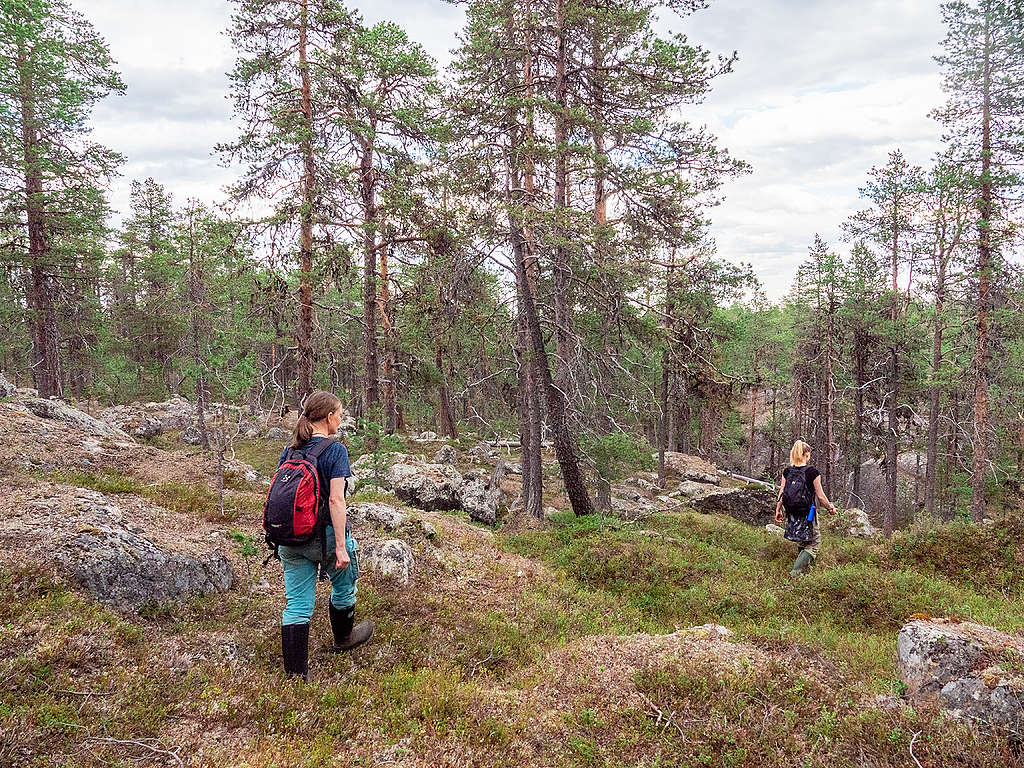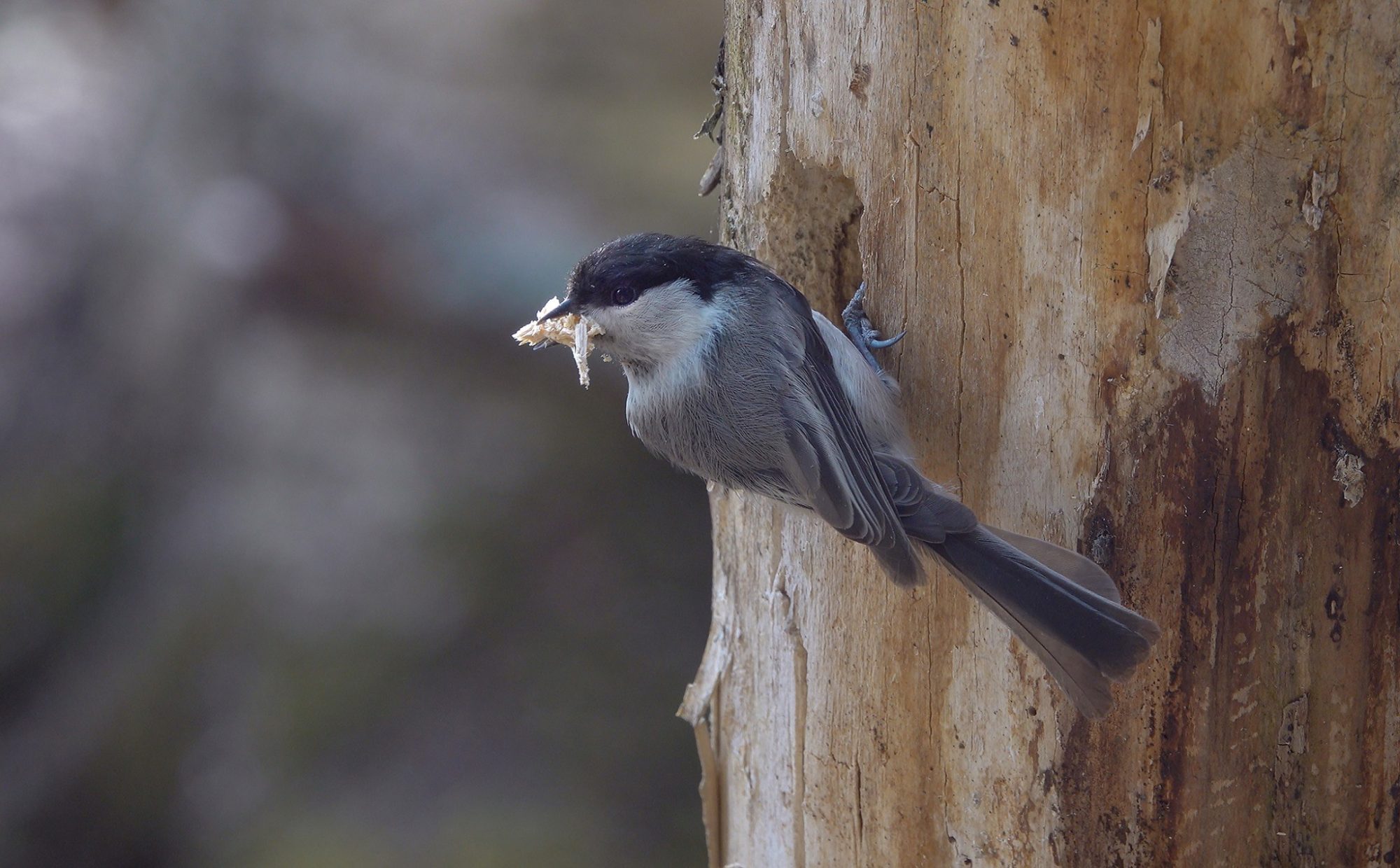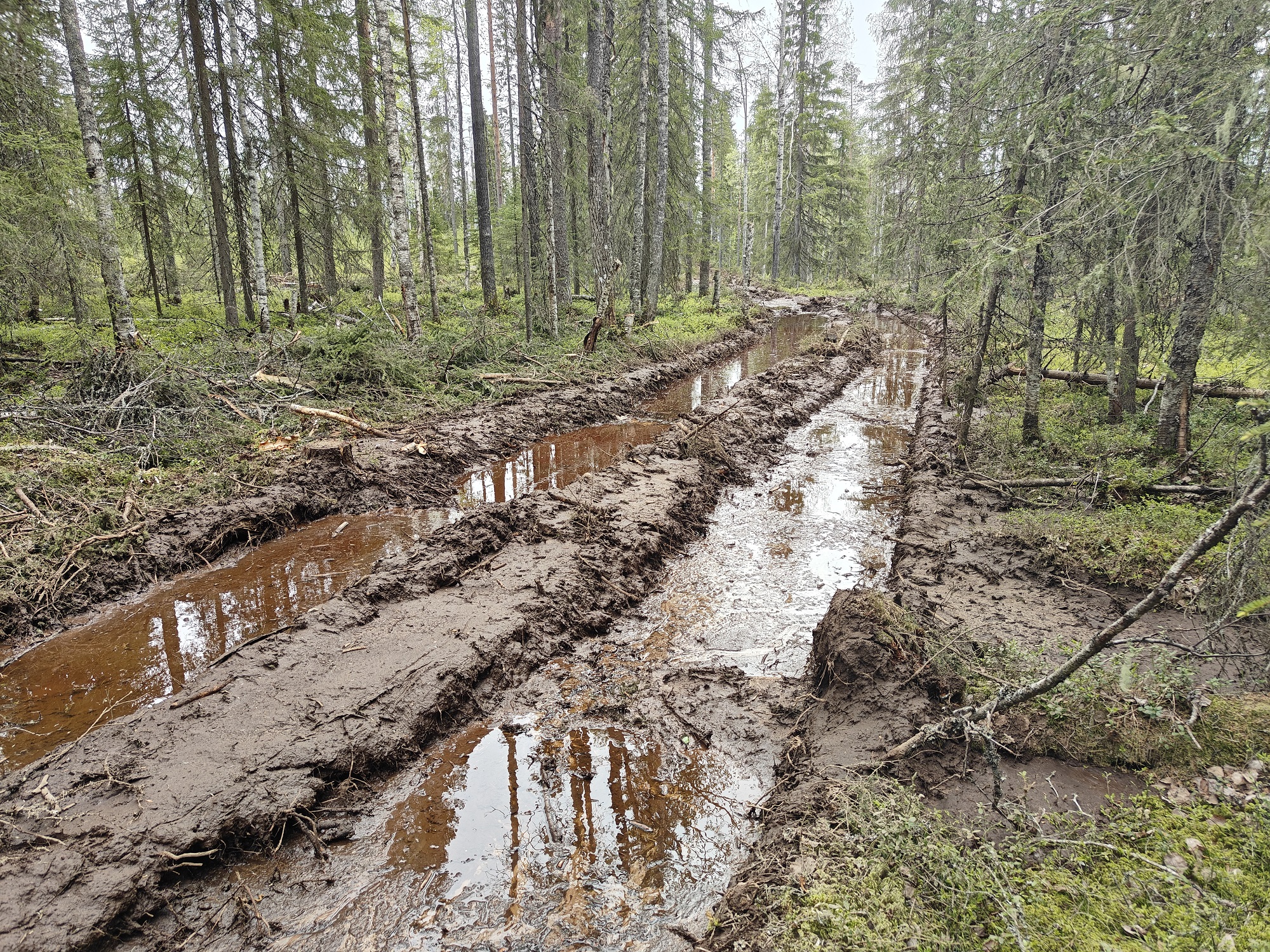Preserving biodiversity and the carbon store, as well as increasing carbon sinks, are the most burning reasons for protecting natural forests. In the northernmost part of Finland, all these reasons are accentuated by the slow growth of the forest. In the Sámi area, the conditions for practicing traditional livelihood, reindeer husbandry, is another important reason for protecting natural forests.

In winter, reindeer depend on the lichen they get by digging through the snow and by eating lichen that has dripped from old trees with snow and wind. Most lichens are found in old natural forests. If there are no lichens, the reindeer have to be fed in winter, which is neither good nor economically viable for the use of natural resources.
Most of the forests in the Sámi area are state forests, the use of which is the responsibility of Metsähallitus. Metsähallitus has many goals, one of which is to produce wood as a raw material for the forest industry. It is easy to understand that the interests of pulp industry and the needs of Sámi reindeer husbandry areon a collision course.
From controversy to negotiations
There have been collisions, but steps have been taken to make things better over the years. As a result of a long campaign, which was also supported by Greenpeace, Metsähallitus signed agreements in 2009 and 2010 with Ivalo Nellim, Muotkatunturi, Hammastunturi, Muddusjärvi and Paatsjoki reindeer herding cooperatives to protect the main pastures for 20 years. After Metsähallitus breached the agreement by logging on sensitive lichen areas, the conflict escalated again in the summer of 2015-2016. Due to strong criticism from the Sámi reindeer herding cooperatives, Metsähallitus had to promise not to cut down forests without the consent of the reindeer herding cooperatives. There has been a frozen conflict for several years.
Over the past year, reconciliation negotiations have resumed and agreement has been reached on a number of important issues of principle, such as the implementation of the internationally agreed right of Indigenous Peoples to Free, Prior and Informed Consent (FPIC). We are now at the stage where the Sámi reindeer herding cooperatives – made possible by the support provided by Greenpeace – are each creating their own comprehensive plan for the use of forests in their own area. The aim is to create guidelines for the use of forests that will enable lichen pastures to recover from the extensive damage caused by forestry. In practice, this means both protecting the remaining old natural forests and managing the already felled forests in a new way. The reindeer herding cooperatives are trying to get Metsähallitus to respect and implement these plans in the negotiations.
As part of the forest plans, an impact assessment will also be carried out on the combined damage caused by forestry and other competing land uses to Sámi reindeer husbandry in each reindeer herding cooperative. Already at this stage, it has become clear that forestry alone can be considered to have caused harm in the two most studied groups, to the extent that there is talk of denying the Sámi cultural rights. Which, in turn, is prohibited under international law.
Mapping as a basis for protection
In addition to the above, Greenpeace has promoted the protection of natural forests in the Sámi area in another way. This summer, Greenpeace volunteers have assisted in the mapping of all state-owned natural forests. Mapping is carried out by the Natural Forest Working Group. Greenpeace volunteers have assisted in the Sámi area, especially in Inari. Nearly 20,000 hectares of potential natural forests were mapped this season. These maps are not only needed to find and protect natural forests. The maps are also one of the key documents in the negotiations between the Sámi communities on pasture forests.
There is still work to be done. The mapping is based on satellite and aerial imagery, other open remote sensing data and information provided by local people, especially the Sámi reindeer herders. In addition, field visits are needed to refine and confirm the information. Almost 100,000 hectares are still waiting to be surveyed in the Sámi area.
Negotiations between Metsähallitus and the Sámi reindeer herding cooperatives are expected to be finalized during 2022. Finland’s decisions on the protection of natural forests required by the EU may have to wait until at least 2023. In any case, the prerequisite for success is that the correct information about the remaining natural forests is completed as soon as possible, both in Sápmi and elsewhere in Finland.



